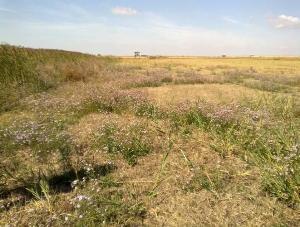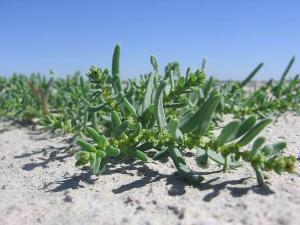Milica Lukovic
Realization of the project activities will contribute to understanding of importance of conservation of halophytic grasslands since they are natural habitats enabling occurrence of very specific flora, including rare, endangered and endemic species.

Rusanda (Halophytic pasture). ©Milica Petrovic.
Saline sites are recognized as internationally important habitats. In Serbia, such habitats occupy about 250.000 ha of halomorphic soils of different salinity levels with specific and unique features of halophytic sites. Some of them are very poor in plant biodiversity, containing only of several obligate halophytes (e.g. Suaeda maritima, Salicornia europea, etc.), whereas the others are rich in species due to exposure to low soil salinity. Both groups of grasslands are used primarily as pastures. Some of halophytic habitats were overgrazed and thus quite degraded.

Slano kopovo (Suaeda maritime).© Milica Petrovic.
A number of medicinal and aromatic plants was determined, including chamomile, mint and yarrow. Most of the habitats of highly salinized soils were characterized by endemic halophyte, the Camphorosma annua. Vegetation of certain halophytic habitats in Serbia have not been studied yet, neither form biodiversity and habitat characterization aspect, nor from assessment of historical and current use and management. In addition, such habitats are very sensitive to both environmental and human impacts. Most of saline habitats are not managed in sustainable way, despite a certain potential for sustainable utilization (cutting meadows, pastures, presence of medicinal, aromatic and ornamental plants).
Conservation measures of these unique ecosystems so far have not been sufficiently implemented, causing often vegetation succession and related biodiversity loss. Research of flora and vegetation in relation to soil type and salinity level of the target halophytic habitat will provide the basis for biodiversity assessment for sustainable use. Therefore, it would be very important to obtain all relevant information on flora, vegetation, soil features and use aiming to assess a basis for their biodiversity conservation and sustainable management.